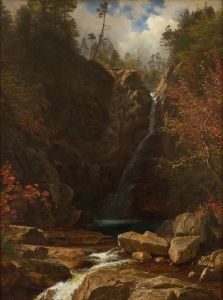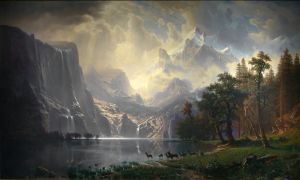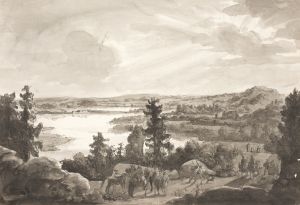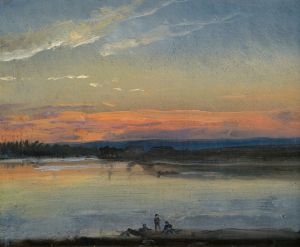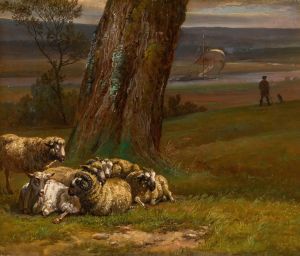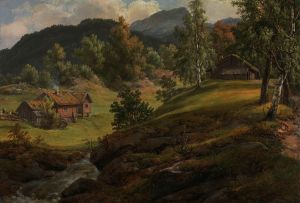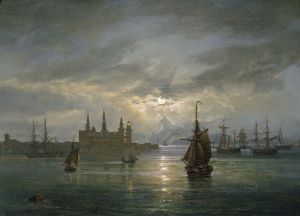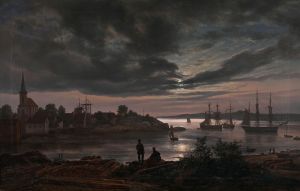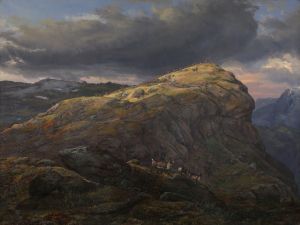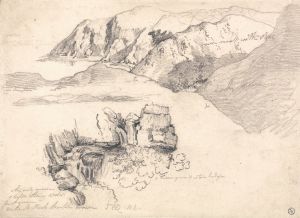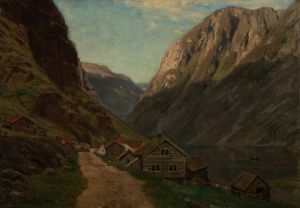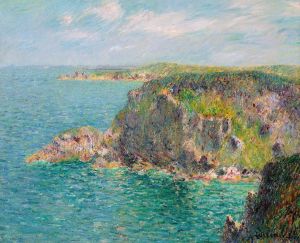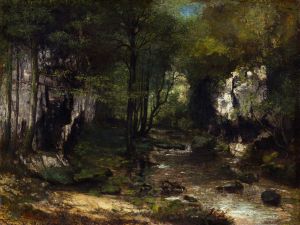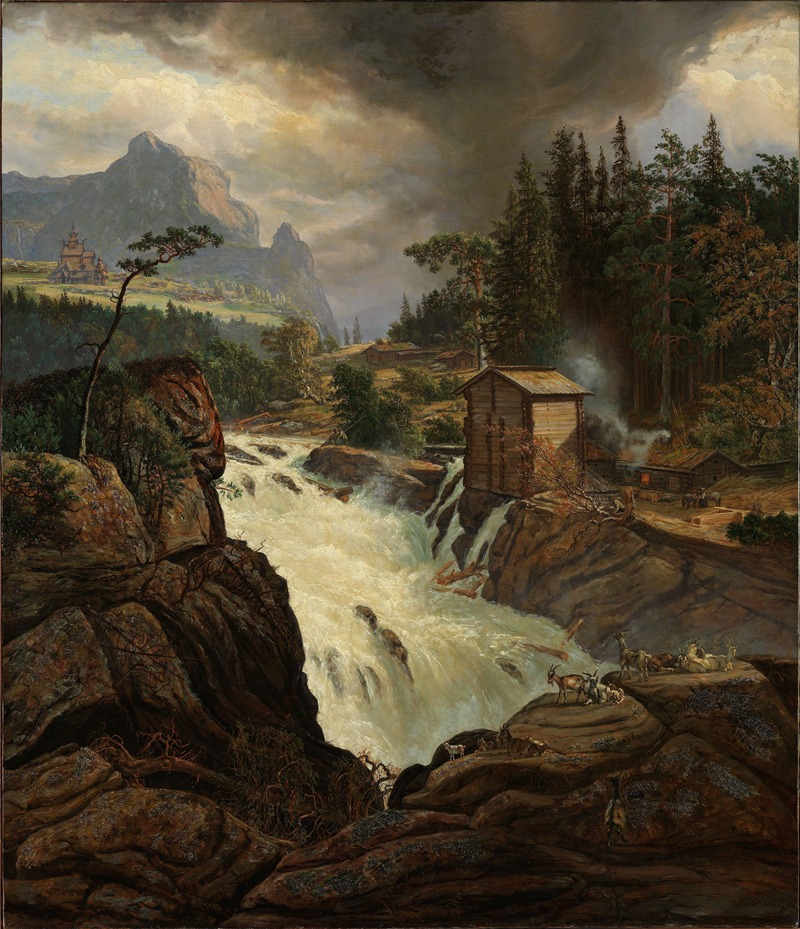
The upper Falls of the Labrofoss
A hand-painted replica of Johan Christian Dahl’s masterpiece The upper Falls of the Labrofoss, meticulously crafted by professional artists to capture the true essence of the original. Each piece is created with museum-quality canvas and rare mineral pigments, carefully painted by experienced artists with delicate brushstrokes and rich, layered colors to perfectly recreate the texture of the original artwork. Unlike machine-printed reproductions, this hand-painted version brings the painting to life, infused with the artist’s emotions and skill in every stroke. Whether for personal collection or home decoration, it instantly elevates the artistic atmosphere of any space.
"The Upper Falls of the Labrofoss" is a notable painting by the Norwegian artist Johan Christian Dahl, completed in 1827. Dahl, often referred to as the father of Norwegian landscape painting, was a pioneering figure in the Romantic movement, which emphasized the beauty and power of nature. This painting is a prime example of his skill in capturing the dramatic and sublime aspects of the natural world.
Johan Christian Dahl was born on February 24, 1788, in Bergen, Norway. He initially studied at the Royal Danish Academy of Fine Arts in Copenhagen, where he was influenced by the Danish Golden Age of painting. Dahl's work is characterized by a deep appreciation for the Norwegian landscape, which he often depicted with a sense of grandeur and emotional intensity.
"The Upper Falls of the Labrofoss" depicts the Labrofoss waterfall, located on the Numedalslågen River in Norway. The waterfall is one of the most significant natural landmarks in the region, known for its powerful and picturesque cascades. In Dahl's painting, the waterfall is portrayed with a dynamic and almost theatrical quality, capturing the movement and energy of the rushing water.
The composition of the painting is carefully balanced, with the waterfall occupying a central position. The surrounding landscape, including the rocky cliffs and lush vegetation, is rendered with meticulous detail. Dahl's use of light and shadow enhances the dramatic effect, creating a sense of depth and realism. The sky above is depicted with a mix of clouds and clear patches, suggesting a moment of changing weather, which adds to the overall mood of the scene.
Dahl's technique in this painting reflects his mastery of both oil and watercolor mediums. He was known for his ability to convey texture and atmosphere, and "The Upper Falls of the Labrofoss" is a testament to his skill in these areas. The painting demonstrates his keen observation of nature and his ability to translate that observation into a compelling visual narrative.
"The Upper Falls of the Labrofoss" is part of the collection at the National Gallery in Oslo, Norway. It is considered one of Dahl's masterpieces and an important work in the history of Norwegian art. The painting not only showcases Dahl's technical prowess but also his deep connection to the Norwegian landscape, which he celebrated throughout his career.
Johan Christian Dahl's influence extended beyond his own work. He was a mentor to several younger artists, including Thomas Fearnley and Peder Balke, who would go on to become significant figures in Norwegian art. Dahl's legacy is evident in the continued appreciation of his landscapes, which capture the rugged beauty and sublime qualities of Norway's natural environment.
In summary, "The Upper Falls of the Labrofoss" by Johan Christian Dahl is a significant work of art that exemplifies the Romantic fascination with nature's power and beauty. Through his detailed and dramatic portrayal of the Labrofoss waterfall, Dahl has created a lasting tribute to the Norwegian landscape and cemented his place as a key figure in the history of landscape painting.





